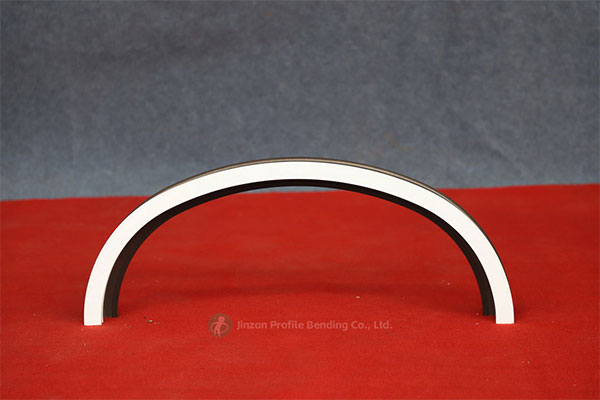Redefining the construction industry with innovative solutions, cuttin-edge technology and sustainable practices
Profile Bending 2025-06-20
In the realm of modern architecture, the use of innovative materials and construction techniques plays a crucial role in creating visually stunning and structurally sound buildings. Among these materials, steel has emerged as a favorite due to its strength, versatility, and adaptability. One of the most exciting advancements in steel construction is the method of steel curving, which allows architects and engineers to push the boundaries of design while ensuring structural integrity. This article explores the innovative methods of steel curving, their applications in architecture, and the benefits they bring to both aesthetics and functionality.
Steel curving refers to the process of bending steel into various shapes and forms to meet design specifications. This technique is particularly advantageous in architectural applications, where complex curves and organic shapes are often desired. Steel can be curved through various methods, including hot bending, cold bending, and CNC (Computer Numerical Control) machining. Each method offers unique benefits and can be selected based on the project’s requirements.
1. Hot Bending
Hot bending involves heating steel to a specific temperature, making it malleable enough to be shaped without compromising its structural integrity. This method is particularly useful for creating large, sweeping curves that are difficult to achieve through other means. Hot bending is often used in the construction of arches, domes, and large structural elements that require significant strength and stability.
2. Cold Bending
Cold bending, on the other hand, involves bending steel at room temperature. This method is typically used for smaller sections of steel and is often favored for its efficiency and cost-effectiveness. Cold bending allows for precise control of the curvature, making it suitable for applications where accuracy is paramount, such as in the fabrication of railings, frames, and other architectural details.
3. CNC Machining
CNC machining technology has revolutionized steel curving by allowing for highly precise and intricate designs. CNC machines can be programmed to create complex curves and shapes that would be nearly impossible to achieve by hand. This method enhances customization possibilities, enabling architects to realize their creative visions with unparalleled accuracy. CNC machining is increasingly used in contemporary architecture for ornamental facades, custom structural elements, and unique installations.

The application of innovative steel curving methods in architecture is vast and varied. Here are some notable examples:
1. Structural Elements
Curved steel beams and trusses are commonly used in large-scale structures such as stadiums, bridges, and concert halls. These elements not only provide the necessary support but also contribute to the overall aesthetic appeal of the building. For instance, the iconic curved roof of the Sydney Opera House is a prime example of how steel curving can transform a functional structure into a work of art.
2. Facades
Curved steel panels are increasingly used in building facades to create dynamic and visually striking exteriors. These panels can be designed to reflect light, creating a play of shadows and highlights that changes throughout the day. Buildings like the Heydar Aliyev Center in Baku, Azerbaijan, showcase the potential of curved steel in creating fluid, organic forms that challenge conventional architectural design.
3. Interior Spaces
In addition to exterior applications, steel curving is also utilized in interior architecture. Curved staircases, railings, and feature walls made from steel can enhance the flow of space and create a sense of movement within a building. These design elements not only serve functional purposes but also add a layer of sophistication and elegance to interior environments.
Enhancing Structural Integrity
One of the key benefits of using curved steel in architecture is its ability to enhance structural integrity. Curved shapes distribute loads more evenly compared to traditional straight beams, reducing stress concentrations and increasing overall strength. This is particularly important in large structures where safety and durability are paramount.
Curved steel elements also allow for greater flexibility in design, enabling architects to create open spaces without the need for excessive support columns. This open concept can lead to more usable square footage and improved functionality in various building types, from commercial spaces to residential homes.
Aesthetic Design and Innovation
Beyond structural advantages, steel curving opens up a world of aesthetic possibilities. The ability to create smooth, flowing lines and complex geometries allows architects to break free from traditional box-like structures. This innovation in design not only enhances the visual appeal of buildings but also helps to create a connection between the built environment and nature.
Moreover, the combination of steel with other materials—such as glass, wood, and concrete—can lead to striking contrasts and complementary textures. This synergy between materials can result in buildings that are not only beautiful but also sustainable, as steel's recyclability adds an eco-friendly dimension to architectural projects.
Innovative steel curving methods are revolutionizing the architecture landscape, enabling designers and builders to create structures that are both aesthetically pleasing and structurally sound. As technology continues to advance, the possibilities for steel curving are bound to expand, pushing the limits of what is achievable in architectural design and construction.